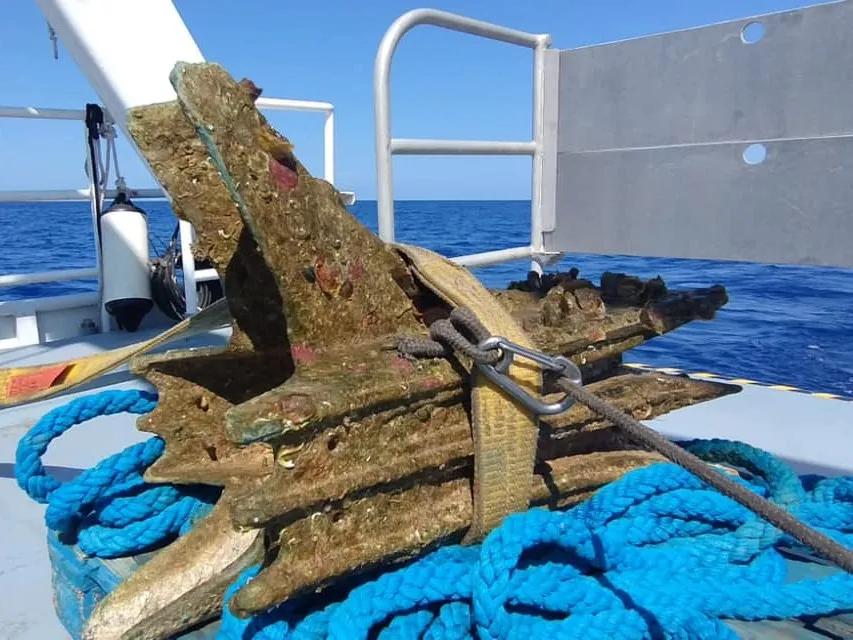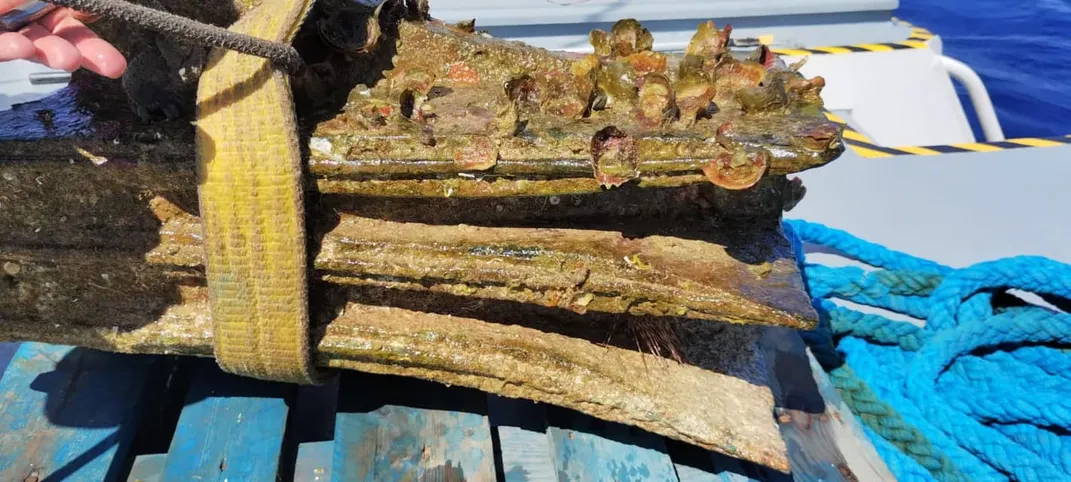Archaeologists Uncover Ancient Warship’s Bronze Battering Ram, Sunk During an Epic Battle Between Rome and Carthage
Found near the Aegadian Islands, just west of Sicily, the bronze rostrum played a role in the last battle of the First Punic War, which ended in 241 B.C.E.

In 241 B.C.E., two empires faced off in a naval clash off the coast of Sicily. By then, Rome and Carthage had been fighting for more than two decades. Rome’s victory in the skirmish, officially called the Battle of the Aegates, brought an end to the First Punic War, the initial conflict in a series of wars between the two ancient powers.
Now, explorers have recovered a piece of that final battle: the bronze battering ram of an ancient warship. According to a statement from Sicily’s Superintendence of the Sea, the ram was found on the seafloor off the western coast of the Mediterranean island, at a depth of around 260 feet. To retrieve the artifact, the team used deep-water submarines from the Society for Documentation of Submerged Sites (SDSS) and the oceanographic research vessel Hercules.
The seabed off the Aegadian Islands “is always a valuable source of information to add further knowledge about the naval battle between the Roman and Carthaginian fleets,” Regional Councilor for Cultural Heritage Francesco Paolo Scarpinato tells Finestre sull’Arte. He adds that the find is yet another confirmation of the work of the late archaeologist Sebastiano Tusa, who spearheaded exploration of the seabed as the site of the 241 battle after a separate ram, also known as a rostrum, was first found there in the early 2000s. In the two decades since, researchers have recovered at least 25 rams from the seabed.
At the time of the Battle of the Aegates, Rome and Carthage had been at war for 23 years, fighting for dominance in the Mediterranean. As the Greek historian Polybius later wrote, the Romans sank 50 Carthaginian ships and captured another 70 along with their crews, taking nearly 10,000 sailors prisoner during the naval battle. Rome forced Carthage to surrender. But the fragile peace was short-lived: Over the next century, Rome would go on to fight a second and third war against the Punic people, winning each time.
“It was very costly, both in terms of human life and economically,” Francesca Oliveri, an archaeologist at the superintendence, told BBC News’ Alessia Franco and David Robson in 2022. “In the last phase, Rome even had to ask for a loan from the most well-to-do families to arm the fleet and build new boats.”
The recently discovered ram has been brought to Favignana, one of the Aegadian Islands, for further study. Though its features are difficult to make out because the object is covered in marine life, researchers have been able to discern a decoration on its front: a relief depicting a Montefortino-style Roman helmet decorated with three feathers.

The battering ram adds to the wealth of war relics found on the seabed, which also include 30 Roman soldiers’ Montefortino helmets, two swords, coins and many clay amphorae (large storage jars).
According to the SDSS, rams were the most important naval weapons of their time. They were placed on the bows of warships at water level so that sailors could crash their boats into enemy vessels, damaging and sinking them. The plethora of rams scattered on the seabed are testaments to the weapons’ effectiveness in ancient battle.
“We are finding so many things that help to illustrate a little better the world of the third century [B.C.E.],” Oliveri told BBC News in 2022. “It’s the first site of a naval battle, in the world, that has been scientifically documented like this, and it will continue to be documented—because the area of interest is very large. … It will take at least another 20 years to explore it fully.”

